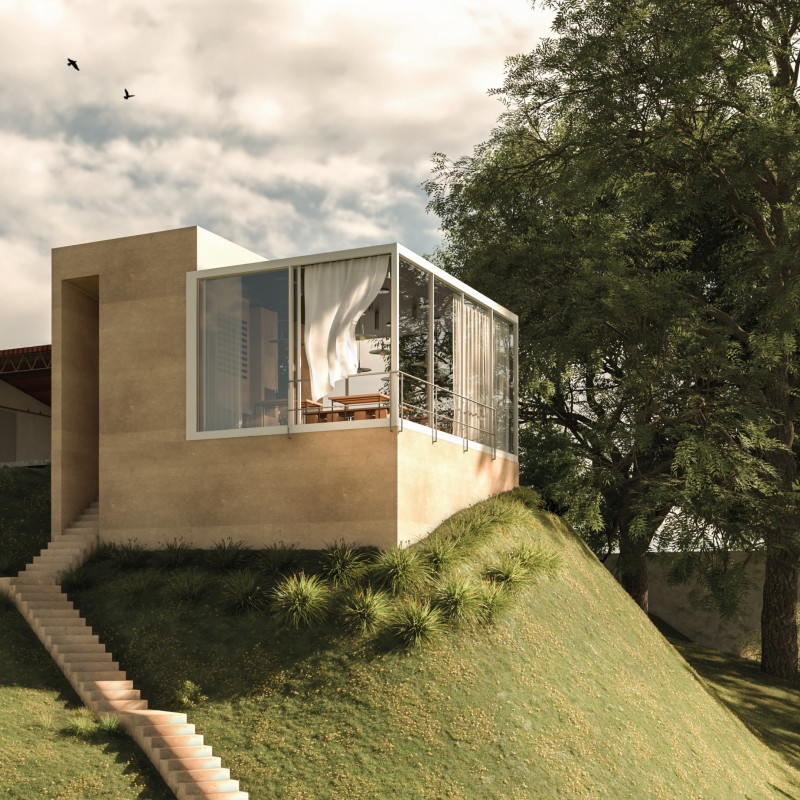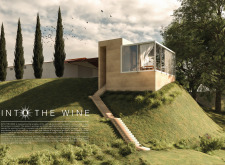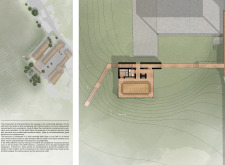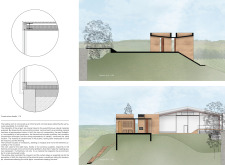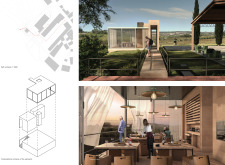5 key facts about this project
INTO THE WINE is located in the agricultural area of Lisbon's countryside. The design focuses on creating a strong connection between the building and the vineyard landscape. This project aims to enhance the experience for visitors by designing spaces that encourage interaction with the environment while respecting the region's agricultural identity.
Conceptual Framework
The design features a clear pathway for visitors. Upon entering, they move through the winery buildings, passing through an internal courtyard and a preexisting terrace before arriving at the vineyard below. This journey emphasizes the view of the landscape. The overall layout includes a panoramic walk, featuring a walkway and staircase, which draws attention to the scenic surroundings and enriches the visitor experience.
Materiality and Structure
Rammed earth is the main material used in construction. This choice reflects a commitment to sustainability and connects the building to the local environment. The solid rammed earth base provides stability and helps the structure fit into the landscape. This base supports three service bodies made from the same material, giving the design a unified look. In contrast, a lower volume characterized by transparency adds lightness. The design choice enhances the visual relationship with the vineyard and creates a sense of openness.
Functional Organization
The tasting room plays an essential role in the overall design. It is organized to facilitate social gatherings, with key services, such as a wardrobe, bathroom, and storage, integrated into three distinct volumes. This arrangement allows for smooth circulation throughout the space. The interior furniture is modular, meaning it can adapt to different needs and encourage a welcoming atmosphere for visitors.
Visual Connectivity
Large windows allow for sweeping views of the vineyard and surrounding landscape. This feature creates a visual link between the inside and outside of the building. Curtains provide control over light and privacy, while still ensuring a clear view of the scenery. This connection invites visitors to fully engage with the tranquil environment and emphasizes the relationship between architecture and landscape.


